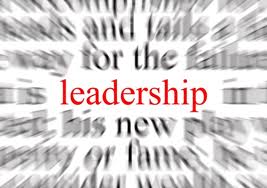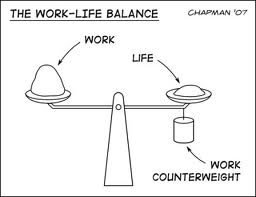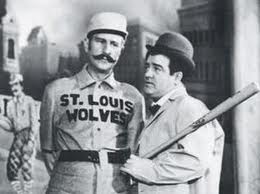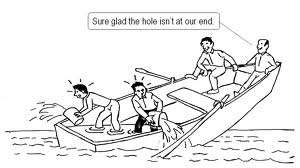 Last week, I wrote a post titled “Managing versus leading at your non-profit organization“. Well, it seems like this is a hot topic for many of you because a day has not gone by without someone saying something to me or emailing me about it. Additionally, my blog analytics reports indicate that this post has been popular. So, I thought I’d take a moment this morning to post a quick follow-up on this topic and share some of what you’ve said to me privately.
Last week, I wrote a post titled “Managing versus leading at your non-profit organization“. Well, it seems like this is a hot topic for many of you because a day has not gone by without someone saying something to me or emailing me about it. Additionally, my blog analytics reports indicate that this post has been popular. So, I thought I’d take a moment this morning to post a quick follow-up on this topic and share some of what you’ve said to me privately.
Smaller non-profit organizations
The idea of leading versus managing appears to be different for small non-profit organizations. Those of you who work at agencies with budgets under $1 million have emphatically said to me that you wear many different hats throughout the day primarily because your budget is stretched very thin. As a result, many of you have described a typical work day that you believe involves significantly more managing than leading.
When I’ve pressed many of you on the question of how to solve this situation, you’ve all had the same reaction, which is that you need to raise more money and hire more staff.
 While I generally agree with you, this solution is simple and possibly unattainable because you’ve described being caught in feedback loop that doesn’t allow for you to find the time to focus on fundraising.
While I generally agree with you, this solution is simple and possibly unattainable because you’ve described being caught in feedback loop that doesn’t allow for you to find the time to focus on fundraising.
In the interest of being solution-focused this morning, the following are just a few ideas that you may want to chew on:
- Identify a funding partner and secure organizational development and capacity building funding to help build a volunteer program, improve your fundraising efforts or strengthen your board.
- Identify a strategic alliance with another non-profit organization in your community. This might free you up and allow you to shift more time from managing to leading.
- Explore merger and acquisition opportunities. If what you’re saying about bigger non-profit organizations is true (e.g. more resources allows their CEO to spend more time leading), then it makes sense to chew on the idea of how you can become a bigger organization.
Bigger non-profit organizations
 The idea of leading versus managing also appears to be different for larger non-profit organizations. Those of you who work at agencies with multi-million dollar budgets have emphatically said to me that you end up focusing more on managing than on leading when the staff underneath you doesn’t perform or do well at executing their jobs.
The idea of leading versus managing also appears to be different for larger non-profit organizations. Those of you who work at agencies with multi-million dollar budgets have emphatically said to me that you end up focusing more on managing than on leading when the staff underneath you doesn’t perform or do well at executing their jobs.
With a sluggish economy and job market, the solution is obvious . . . find ways to hire more talented people than what you currently have on your staff. While this is a simple solution, it is something with which many of you are struggling. Why? Because we are non-profit professionals and we see this approach as ruthless. You have explained to me that non-profit organizations (specifically social service agencies) are in the business of saving people and not putting them in situations where they need help.
You need to find a way to get over this attitudinal barrier because the job market will not be abundant forever. Now is the time to upgrade your staff. Finding a way to do so in a compassionate way might be one of the most transformational things you do during this decade.
Your leadership toolbox
 As many of you have engaged me in this conversation, we’ve found ourselves talking about tools, strategies and approaches that you think help you restore balance between the competing ideas of leading and managing. The following is a brief list of your thoughts:
As many of you have engaged me in this conversation, we’ve found ourselves talking about tools, strategies and approaches that you think help you restore balance between the competing ideas of leading and managing. The following is a brief list of your thoughts:
- Board development is important. Leadership isn’t just something that comes from the CEO’s office. A strong board that understands their roles and responsibilities and keeps its nose out of the operational details and focused on big picture strategic issues is more likely to demand the same from you.
- Strategic planning is foundational. Many of you have said that it is impossible to lead without a leadership blueprint, and your strategic plan serves that function. The plan is not an “end” strategy, but you’ve said it is a “means to an end” . . . it is a starting point.
- Executive coaching provides perspective. While executive coaching still seems to be more prevalent among for-profit CEOs, some of you told me that you’ve engaged the services of an executive coach. It is hard to “see the forest through the trees“. Your executive coach helps you with this issue and brings a sense of accountability and action-focus to your job.
- Tools and systems make it easier. The following is a list of tools and systems that many of you referenced: annual performance plans, organizational dashboards, time management tools and practices, trainings, weekly meetings with key staff, etc.
I’ve come to the conclusion that this topic is very large and could take up a month’s worth of blog posts. I also find it curious that so many of you want to have this discussion off-line, which is why I decided to double back and ask you to please reconsider and post your thoughts in the comment box below. How do you know when you are leading compared to managing? What are you doing (what tools or strategies are you using) that enables you to do more leading? We can all learn from each other. It will only take one or two minutes out of your day to post a comment. Please?
Here’s to your health!
Erik Anderson
Founder & President, The Healthy Non-Profit LLC
www.thehealthynonprofit.com
erik@thehealthynonprofit.com
http://twitter.com/#!/eanderson847
http://www.facebook.com/eanderson847
http://www.linkedin.com/in/erikanderson847

























